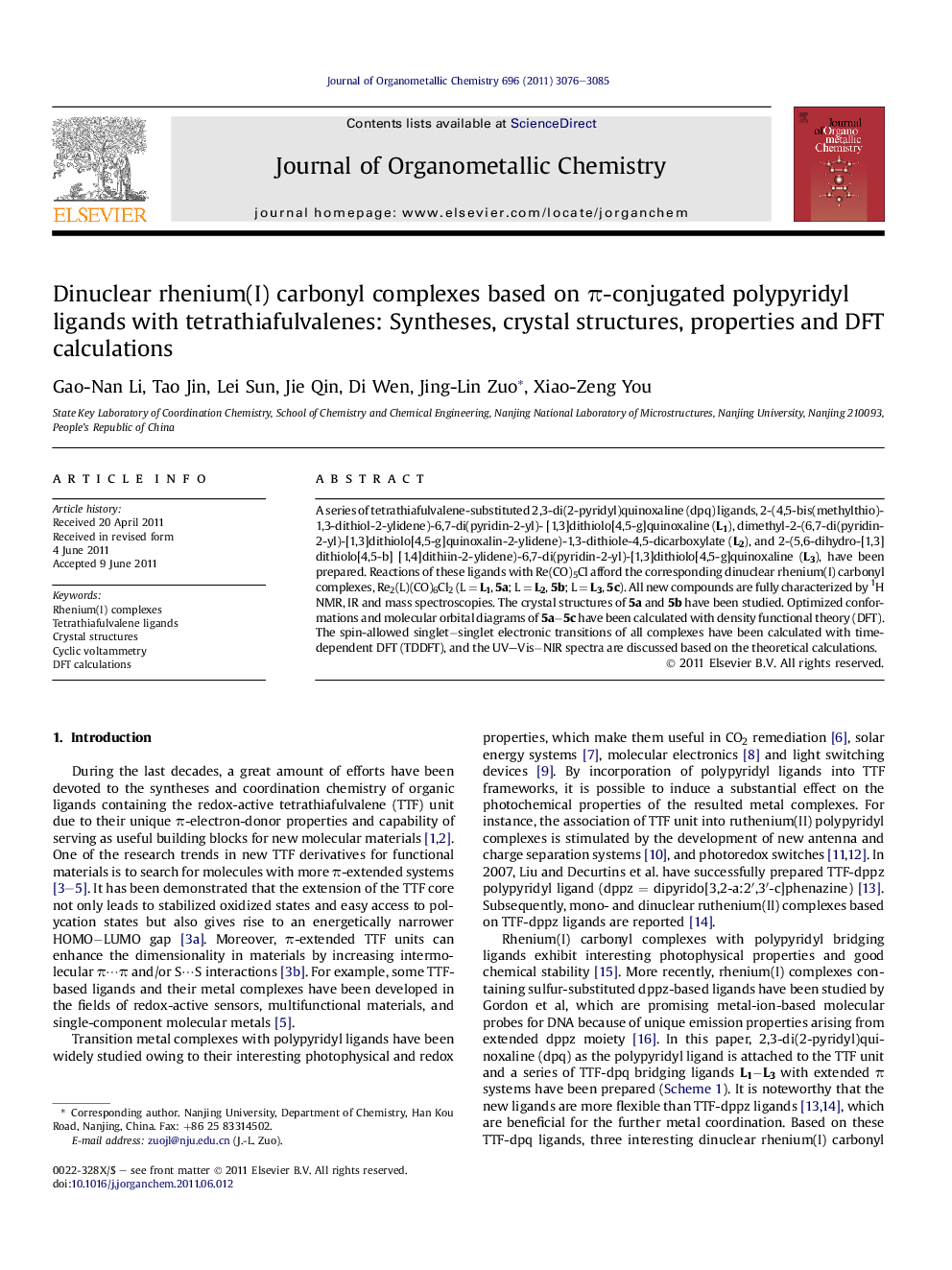| Article ID | Journal | Published Year | Pages | File Type |
|---|---|---|---|---|
| 1322296 | Journal of Organometallic Chemistry | 2011 | 10 Pages |
A series of tetrathiafulvalene-substituted 2,3-di(2-pyridyl)quinoxaline (dpq) ligands, 2-(4,5-bis(methylthio)-1,3-dithiol-2-ylidene)-6,7-di(pyridin-2-yl)- [1,3]dithiolo[4,5-g]quinoxaline (L1), dimethyl-2-(6,7-di(pyridin-2-yl)-[1,3]dithiolo[4,5-g]quinoxalin-2-ylidene)-1,3-dithiole-4,5-dicarboxylate (L2), and 2-(5,6-dihydro-[1,3]dithiolo[4,5-b] [1,4]dithiin-2-ylidene)-6,7-di(pyridin-2-yl)-[1,3]dithiolo[4,5-g]quinoxaline (L3), have been prepared. Reactions of these ligands with Re(CO)5Cl afford the corresponding dinuclear rhenium(I) carbonyl complexes, Re2(L)(CO)6Cl2 (L = L1, 5a; L = L2, 5b; L = L3, 5c). All new compounds are fully characterized by 1H NMR, IR and mass spectroscopies. The crystal structures of 5a and 5b have been studied. Optimized conformations and molecular orbital diagrams of 5a−5c have been calculated with density functional theory (DFT). The spin-allowed singlet−singlet electronic transitions of all complexes have been calculated with time-dependent DFT (TDDFT), and the UV–Vis−NIR spectra are discussed based on the theoretical calculations.
Graphical abstractA series of tetrathiafulvalene-substituted 2,3-di(2-pyridyl)quinoxaline (dpq) ligands and new dinuclear rhenium carbonyl complexes have been prepared and characterized. The crystal structures of Re2(L)(CO)6Cl2 (L = L1, 5a; L = L2, 5b) have been described. The electrochemical and spectroscopic properties of all complexes have been investigated, and the absorption spectra of 5a−5c have been analyzed by time-dependent density functional theory (TDDFT).Figure optionsDownload full-size imageDownload as PowerPoint slideHighlights► Dinuclear rhenium carbonyl complexes with tetrathiafulvalene-substituted 2,3-di(2-pyridyl)quinoxaline ligands are synthesized. ► The luminescence of rhenium(I) complexes from MLCT states is quenched and the NIR fluorescence is observed. ► The absorption spectroscopy is analyzed on the basis of DFT and TDDFT.
